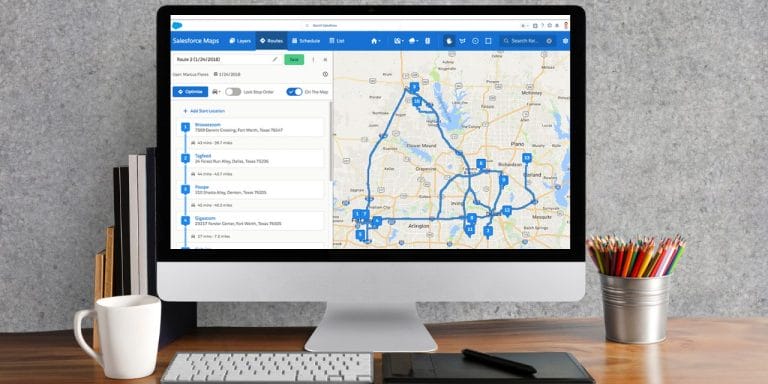Ask any sales manager what their biggest frustration is, and they’ll invariably refer to the sales reps who fail to follow up with leads.
It’s a huge pain point.
Even though sales reps know how important it is to follow up, most of them find it’s a turn-off.
It’s certainly not what they had in mind when they started selling. On the other hand, closing deals, topping the sales leaderboard, and popping celebratory champagne is infinitely more appealing.
But what many reps fail to realize is that the top sales pros are not afraid to graft. Following up for the umpteenth time in a day and getting cut-off while holding for eternity doesn’t deter the best reps.
Instead, your average sales rep tries a couple of times before giving up, which means potential customers fall through the cracks, and a pile of money is left on the table.
But what if there was a way to make the whole sales follow-up process more efficient and less laborious?
Well, the good news is, there is.
In this guide, we’ll show you eleven ways to improve your sales follow-up process right now so that you don’t lose any more potential customers and your reps actually embrace the strategy.
The Importance of Sales Follow-Ups
It’s highly improbable that you can make a sales pitch and close a deal the first time around.
Put yourself in your customer’s shoes: would you buy a product or service the first time you heard about it?
Making a positive first impression is crucial. And understandably, most sales reps ensure their presentation, product demo, or sales email is spot on.
But then they fail to follow up. And as a result, potential sales are lost.
Statistics show that 80% of sales require 5 follow-up calls after the first meeting. Yet, rather alarmingly, 44% of sales reps give up after following up only once, and 92% of sales pros quit after the 4th call, just one follow-up short of closing a deal.
That’s an incredible amount of potential sales that are not being closed. And a stack of valuable revenue that’s being lost.
And that’s why sales follow-ups are critical if your business is going to succeed.
11 Ways to Improve the Sales Follow-Up Process
In this section, we’ve identified eleven ways you can improve your sales follow-up process and generate more revenue.
1. Determine your benchmark
You can see from the figures above that most sales reps fail to follow up after the first call.
But it’s vital that you calculate the benchmark for your team, so you can see precisely how many follow-ups it takes to convert a prospect into a customer. Then set that number as your baseline for all reps to hit within a specific timeframe.
How to calculate:
Total (#) of Follow-up Attempts / Total (#) of Leads = Average (#) Follow-up Attempts Per Lead.
2. Follow up on multiple channels
It’s understandable why sales reps might give up after getting no reply to three carefully crafted follow-up emails.
But instead of walking away, it might be better to change channels and try phoning or visiting your prospect.
After all, on average, professionals have more than 200 emails in their inbox at any one time, receive 120 new ones each day, but respond to only 25% of them.
Of course, it’s not just emails that get ignored – phone calls also get blocked or diverted. The point is, sales reps have to be prepared to follow up multiple times on various channels if they want to close the deal.
3. Automate follow-up sequences
One way to ensure your sales reps never forget to follow up with prospects again is by automating the sales follow-up process.
Autoplays enable sales managers and reps to create activity sequences that remind reps when to follow up, with what message, and on which channels.
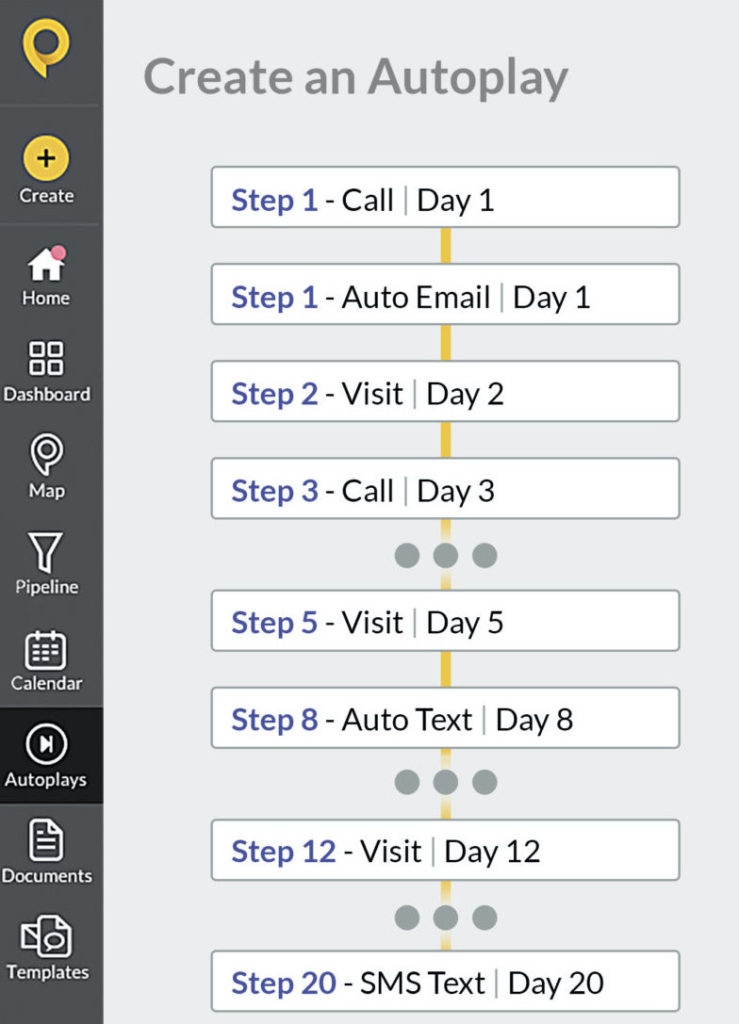
For example, the follow-up process might look something like this:
- Step 1 – Call | Day 1
- Step 1 – Auto Email | Day 1
- Step 2 – Visit | Day 2
- Step 3 – Call | Day 3
- Step 4 – Email | Day 4
- Step 5 – Visit | Day 5
By sticking to a disciplined autoplay sequence, reps are held accountable for following a sales process that is proven to generate pipeline, and as a result, fewer leads fall through the cracks.
4. Follow up fast
Following up quickly can impact your success rate.
An analysis of more than 2,200 American companies found that those who attempted to reach leads within an hour were nearly seven times more likely to have meaningful conversations with decision-makers than those who waited even sixty minutes.
5. Keep it short
As highlighted earlier, your prospects are busy people. If you want to have any chance of reaching them, you need to keep your follow-up short and on point.
There’s definitely no room for waffling emails, lengthy phone calls, or endless Zoom meetings.
Ideally, your email follow-up should only be around six lines long, and your follow-up telephone calls should not exceed ten minutes.
You’ve only got a moment to capture your prospect’s attention and move them to the next step in the sales pipeline, so don’t hang around – get straight to the point.
6. Remind prospects of their pain
One solid reason to follow up is to remind prospects of their pain. You already know that your product or service can take that pain away, but there’s nothing wrong in agitating the problem and highlighting again how you can help.
7. End every interaction with a clear next step
The easiest time to get your prospect to commit to the next meeting is at the end of your current appointment.
They’ll likely have their calendar open in front of them, so what better time to capitalize. You can even send an invitation while you’re talking to them so that the follow-up date is set and accepted.
Whatever you do, don’t end your current meeting without a firm date in your calendar. Otherwise, you’ll end up playing cat and mouse, trying to tie them down. Plus, it gives you a valid reason for the next follow-up.
8. Map your cadence to the sales cycle
One thing to bear in mind is not to go from one extreme to another. Following up too often is almost as bad as not following up at all.
You want to stagger your follow-ups enough to avoid being annoying but also remaining top of mind.
The follow-up cadence will be driven mainly by the length of the sales cycle. For instance, the B2B sales cycle is longer than B2C sales, as there’s usually more than one stakeholder making the purchasing decision, plus the order value is significantly higher.
If you’re unsure of the right cadence, check with your manager and other sales reps to see what works best in your situation.
9. Don’t forget about existing customers
With all the focus on following up prospects, it’s easy to forget about your existing customers. Not all sales efforts have to target new customers. In fact, it’s easier to sell to existing customers than chase new leads.
The probability of selling to an existing customer is 60-70%, compared to the probability of selling to a new prospect is 5-20%.
It pays to follow up with your existing customers, keep them warm, and look for opportunities to increase revenue through upselling and cross-selling.
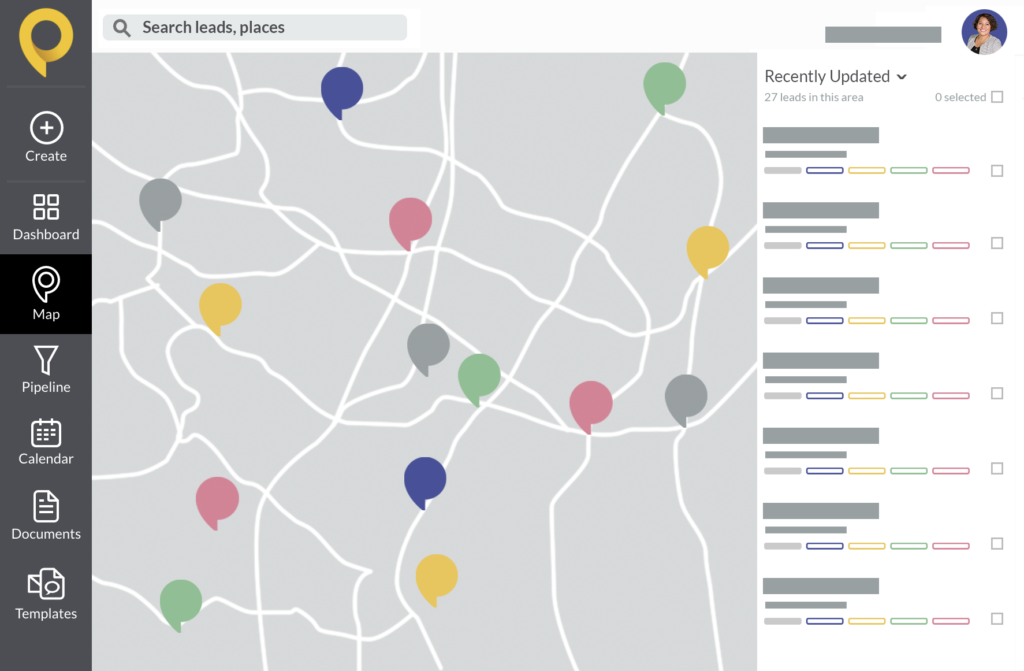
Customer mapping software, such as SPOTIO, can integrate with your CRM and make it easier for reps to distinguish between leads, opportunities and existing customers within a specific sales territory.
10. Hold reps accountable
Sales reps need to know that they will be held accountable for completing their daily, weekly, and monthly sales activities, many of which will entail follow-ups across different channels as outlined in the sales process.
This is where sales activity tracking software comes in:
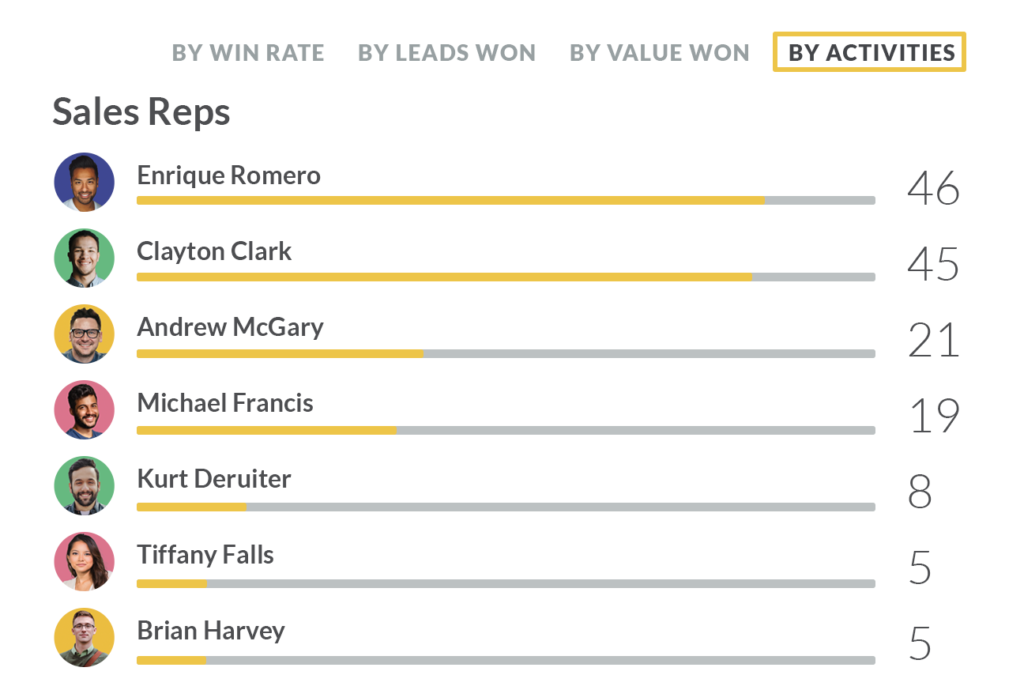
Sales tracking software enables sales managers to create activity reports that pull insights and analytics by individual reps or teams and by territories, so they can measure and report on the sales activity that’s most important and make smarter decisions.
The software also updates your CRM automatically, so managers don’t need to rely on reps recording their sales activities.
11. Track and refine the follow-up process
No sales and marketing process would be complete without tracking your results and refining the process accordingly.
- Are there particular channels that are more effective in re-engaging a prospect/lead/existing customer?
- Is there specific messaging, such as subject lines or CTAs, that works better across different channels?
- How many touchpoints on average are required? Was our benchmark accurate? Does it need to be altered?
Continually monitor, test, and refine the sales follow-up process, whether that involves adding or removing channels, altering the cadence, or adjusting the messaging.
How Technology Enhances the Follow-Up Process
As you’ve seen, and probably experienced, following up is incredibly important if you want to succeed in sales. But it’s also extremely tedious.
Thankfully, technology can cut out the boring bits and enhance your entire follow-up process.
Let’s take a look at how sales tracking software like SPOTIO can make your job easier, more profitable, and more enjoyable.
Automate
With SPOTIO, sales reps can also build custom follow-up sequences with the Autoplays feature. You can customize the touchpoints for each lead in your pipeline to account for their follow-up cadence so that prospects are consistently engaged, and nothing falls through the cracks.
Capture
A staggering 91% of CRM data is either incomplete or inaccurate. But with SPOTIO, you can rest easy knowing that it captures every visit, call, text, and email in real-time.
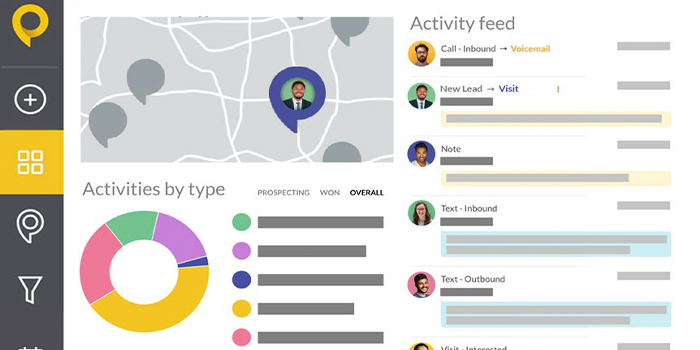
Your sales reps can dedicate their time to following up with prospects on their preferred channel, while SPOTIO takes care of the tedious record-keeping in the back end. And more importantly, you get the complete picture of their sales activities and performance.
Integrate
SPOTIO’S sales activity management software automatically captures every sales activity (without any extra work for your reps) and sends the data directly into your CRM. Sales reps always have information to hand when following up again, so they can quickly get up to speed on the latest activity.
Ultimately, tech should sit on top of your existing workflows and improve the process.
Measure
When it comes to measuring sales performance, SPOTIO’s sales tracking software ensures you have the latest data and insights at your fingertips. You can track all your daily, weekly, and monthly reports from one dashboard.
Plus, you can also get executive summaries emailed directly to your inbox. You no longer have to guess if your reps are following up and performing as expected – you can check their figures and adjust your plans accordingly.
Embrace the Follow-Up
The sales follow-up process is essential to closing more deals and generating more revenue – it’s what separates your #1 sales rep from the pack. Nobody likes to brag about their follow-up activities – they’re hardly exciting – but at the end of the day, results speak for themselves.
However, technology like the SPOTIO platform makes the sales follow-up process a whole lot easier, tighter, and more profitable as no potential customers fall between the cracks.
With customized autoplays, multichannel communication, and sales activity tracking, you can rest assured that your sales reps will actually embrace the follow-up process and start generating more revenue for your business.





